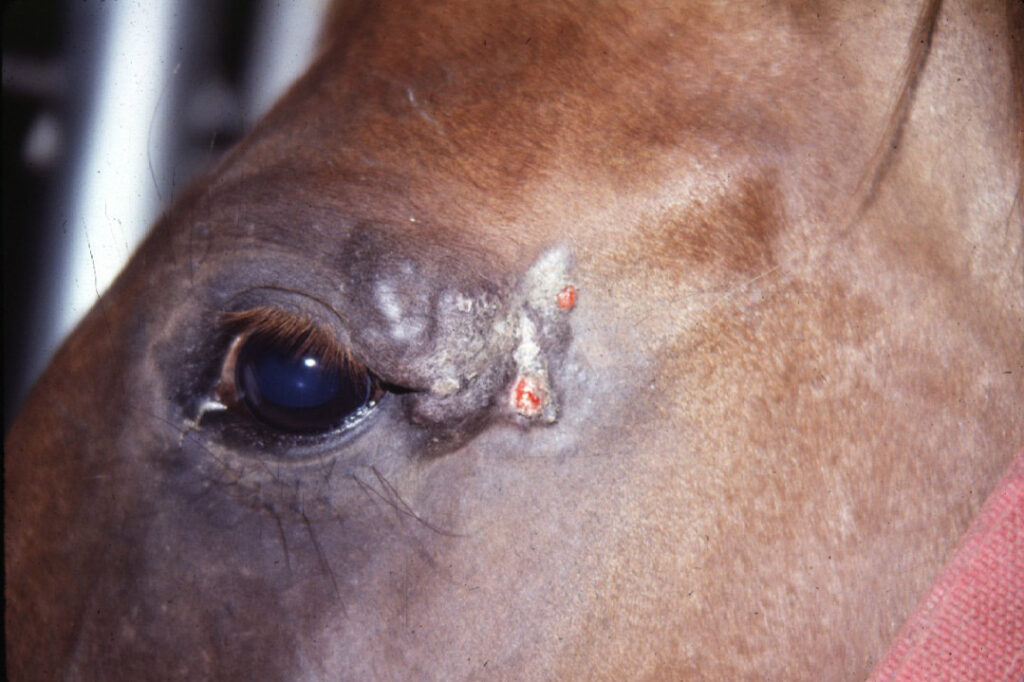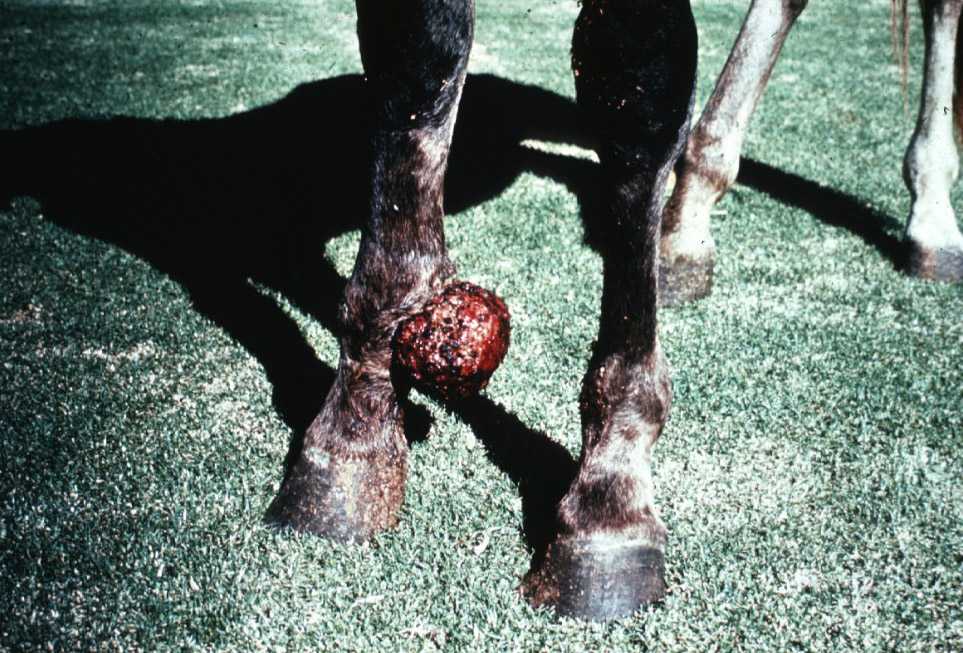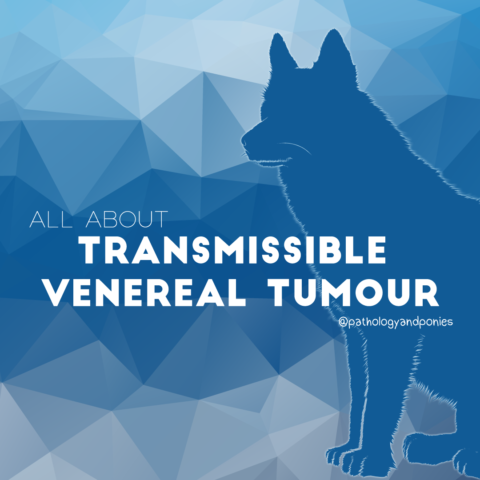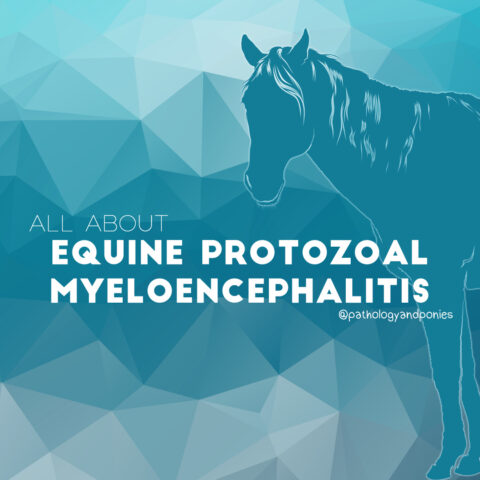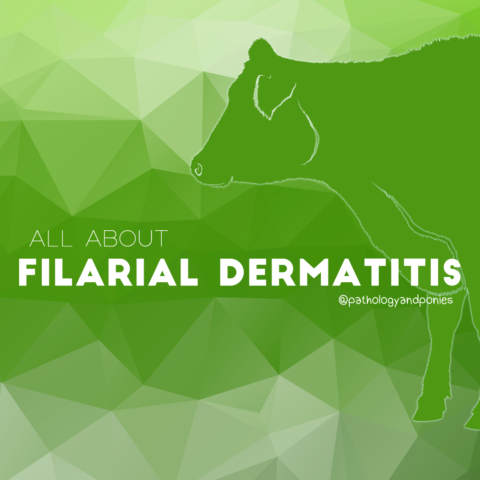Today’s path rounds are on 𝐞𝐪𝐮𝐢𝐧𝐞 𝐬𝐚𝐫𝐜𝐨𝐢𝐝𝐬!
𝐖𝐡𝐚𝐭 𝐢𝐬 𝐢𝐭?
𝐒𝐚𝐫𝐜𝐨𝐢𝐝𝐬 are the most commonly diagnosed tumour of horses! They occur in the skin, and generally are pretty harmless. There are 6 recognized types, ranging from a hairless patch of skin to large, aggressive masses.
𝐖𝐡𝐨 𝐠𝐞𝐭𝐬 𝐢𝐭?
Any age, breed or sex of horse can get these!
𝐖𝐡𝐚𝐭 𝐜𝐚𝐮𝐬𝐞𝐬 𝐢𝐭?
Interestingly, these masses are believed to be caused by 𝐛𝐨𝐯𝐢𝐧𝐞 𝐩𝐚𝐩𝐢𝐥𝐥𝐨𝐦𝐚𝐯𝐢𝐫𝐮𝐬! Yes, you read that right, a cow virus causing a tumour in horses. Wild! There is a lot of evidence to suggest that the virus is spread to horses by flies landing on scrapes, cuts or other wounds, thus introducing the virus into the horse’s system.
𝐖𝐡𝐲 𝐢𝐬 𝐭𝐡𝐢𝐬 𝐚 𝐩𝐫𝐨𝐛𝐥𝐞𝐦?
As mentioned, these tumours generally don’t cause an issue as they are considered relatively benign. It is also extremely rare for them to 𝐦𝐞𝐭𝐚𝐬𝐭𝐚𝐬𝐢𝐳𝐞 (spread to distant sites), unlike some other tumour types. However, sometimes they can become quite large and 𝐮𝐥𝐜𝐞𝐫𝐚𝐭𝐞𝐝 (bleeding from the surface), and potentially interfere with the horse’s day-to-day activities.
𝐇𝐨𝐰 𝐢𝐬 𝐢𝐭 𝐝𝐢𝐚𝐠𝐧𝐨𝐬𝐞𝐝?
Often these tumours are diagnosed just by looking at them. Normally, a 𝐛𝐢𝐨𝐩𝐬𝐲 (looking at tissue under a microscope) would be the best method of diagnosis, similar to other tumours. However, these tumours are known to become more aggressive after being disturbed, often expanding in size uncontrollably after being damaged. So often veterinarians are quite cautious about angering these tumours, even though they are technically benign.
If a biopsy is done, the biopsy will show long extensions of the 𝐞𝐩𝐢𝐝𝐞𝐫𝐦𝐢𝐬 (outer layer of the skin) down into the deeper layers of the skin. Super neat!
𝐇𝐨𝐰 𝐢𝐬 𝐢𝐭 𝐭𝐫𝐞𝐚𝐭𝐞𝐝?
If the sarcoid is in a location that does not bother the horse, sometimes these tumours are “treated” with 𝐛𝐞𝐧𝐢𝐠𝐧 𝐧𝐞𝐠𝐥𝐞𝐜𝐭, otherwise known as doing nothing. However, if they are bothering the horse, or the owner, there are a variety of treatments that can be tried.
Surgical excision is the most obvious one, where the tumour is simply removed. However, there have also been promising results with 𝐜𝐫𝐲𝐨𝐭𝐡𝐞𝐫𝐚𝐩𝐲 (freezing the tumour with liquid nitrogen), antiviral drugs to kill the virus, or even local 𝐜𝐡𝐞𝐦𝐨𝐭𝐡𝐞𝐫𝐚𝐩𝐲 (applying chemicals that kill cells). It is important to note that treated sarcoids tend to come back, and may even be more aggressive upon their return! So a discussion with your veterinarian regarding the pros and cons of treatment is key.
𝐏𝐡𝐨𝐭𝐨𝐬
1-7) Various types of sarcoids in different locations. See how they can range from flat, hairless areas to huge masses?
8 ) An example of what a pathologist would see under a microscope! Those long bright pink strands extending into the tissue are a hallmark sign of sarcoids.
𝐒𝐨𝐮𝐫𝐜𝐞𝐬
Villalobos, AE. Equine sarcoids. Merck Veterinary Manual, 2014.
Photos 2-8 © Noah’s Arkive contributors Giles, Jakowski, Wright, Eastep, Ward, Wallace licensed under CC BY-SA 4.0.




